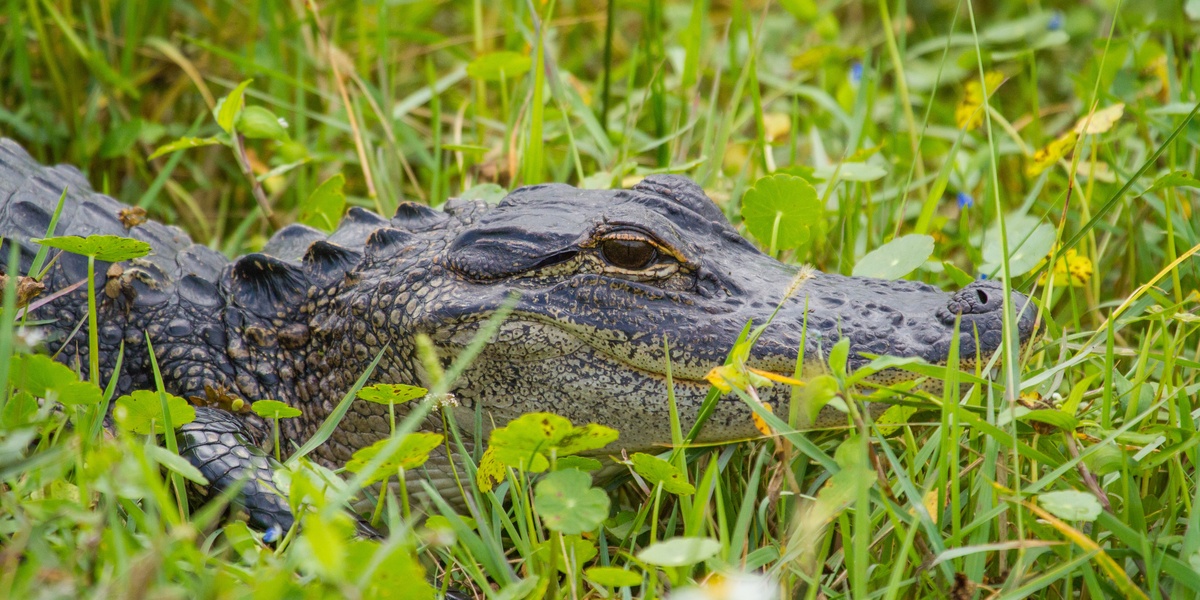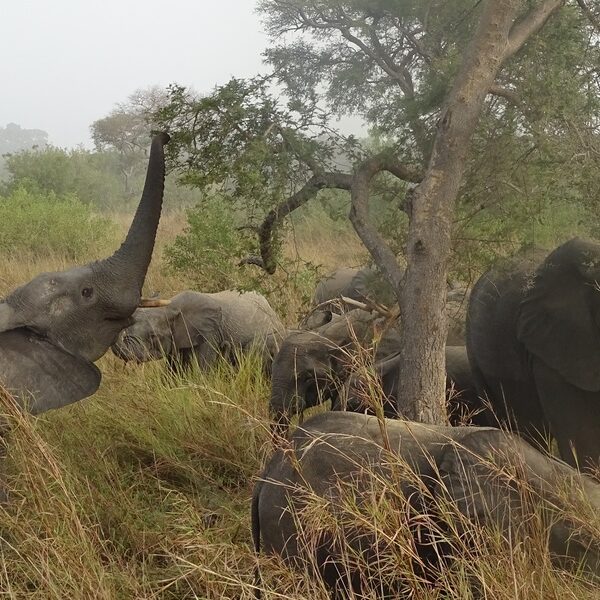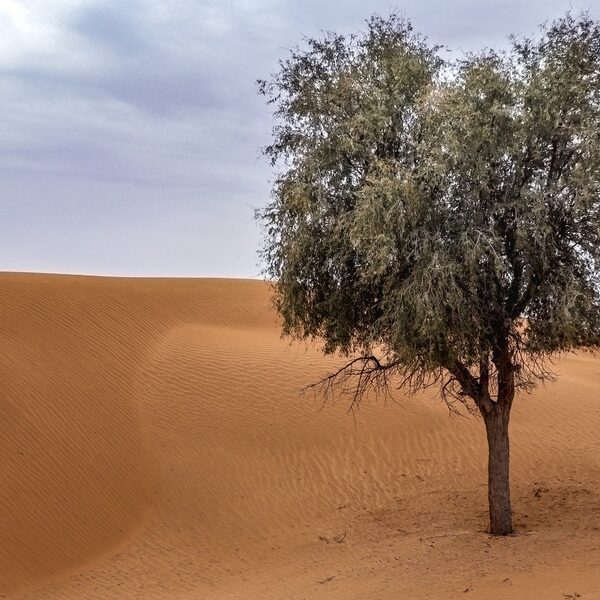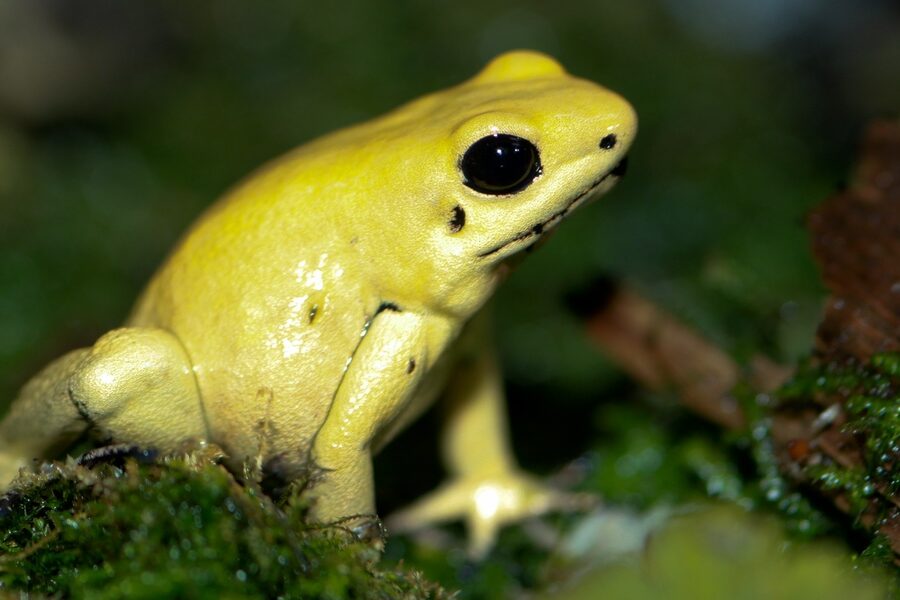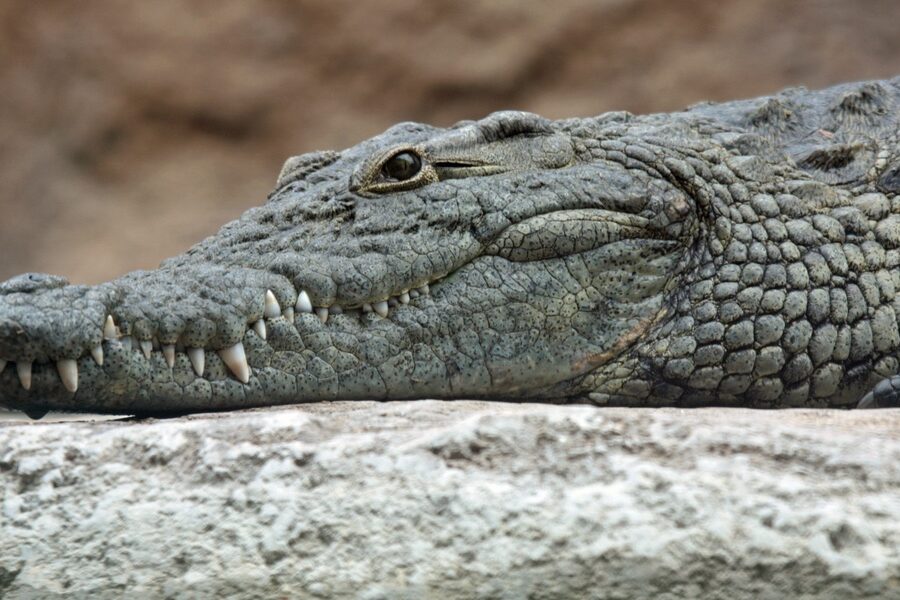Wetlands are incredibly dynamic and vital ecosystems, teeming with a unique array of life adapted to their water-rich environments. From the smallest insects to towering birds, these habitats support an often-overlooked world of biodiversity that plays a crucial role in ecological balance.
Delving deeper into these watery realms, you’ll discover a fascinating collection of wetland reptiles. This comprehensive list details exactly 65 species, showcasing their incredible diversity from the adaptable African Helmeted Turtle to the massive Yellow Anaconda. For each entry, you’ll find below key data including its Scientific Name, Avg. Length (m), Primary Habitat, and Notable Characteristic, offering a clear snapshot of these intriguing creatures.
What makes a reptile a “wetland” species?
A reptile is typically classified as a wetland species if its life cycle, habitat, and foraging habits are intrinsically linked to aquatic or semi-aquatic environments such as swamps, marshes, bogs, and river systems. These animals often exhibit specific adaptations for life in and around water, including specialized swimming abilities, diets primarily consisting of aquatic prey, or physiological tolerances for varying water levels and temperatures. Their presence is a strong indicator of the ecological health and biodiversity of these crucial freshwater and brackish habitats.
Wetland Reptiles
| Common Name | Scientific Name | Avg. Length (m) | Primary Habitat | Notable Characteristic |
|---|---|---|---|---|
| American Alligator | Alligator mississippiensis | 4 | Southeastern US freshwater swamps, marshes, rivers, and lakes | Can create “gator holes” that hold water during droughts, aiding other species. |
| Nile Crocodile | Crocodylus niloticus | 5 | African rivers, marshes, and mangrove swamps | Known for its highly aggressive nature and ambush predation on large mammals. |
| Saltwater Crocodile | Crocodylus porosus | 6 | Estuaries, mangroves, and rivers from Southeast Asia to northern Australia | The largest living reptile on Earth and a powerful swimmer in salt and fresh water. |
| Green Anaconda | Eunectes murinus | 5.5 | Amazon and Orinoco basin swamps, marshes, and slow-moving streams | The world’s heaviest snake, giving birth to live young in the water. |
| Alligator Snapping Turtle | Macrochelys temminckii | 0.65 | Deep rivers, canals, and swamps of the southeastern United States | Uses a worm-like lure on its tongue to attract unsuspecting fish. |
| Cottonmouth | Agkistrodon piscivorus | 1.2 | Southeastern US swamps, streams, and marshes | The world’s only semi-aquatic viper, known for its defensive gape. |
| Mata Mata | Chelus fimbriata | 0.45 | Slow-moving blackwater streams and swamps of the Amazon and Orinoco basins | A bizarre-looking turtle that vacuum-sucks fish into its massive mouth. |
| Gharial | Gavialis gangeticus | 4.5 | Fast-flowing rivers of the northern Indian subcontinent | Its long, extremely thin snout is specialized for catching fish. |
| Spectacled Caiman | Caiman crocodilus | 2 | Central and South American rivers, floodplains, and wetlands | Named for the bony ridge between its eyes that resembles a pair of spectacles. |
| Common Snapping Turtle | Chelydra serpentina | 0.4 | Freshwater ponds, lakes, and streams across North and Central America | Has a powerful beak-like jaw and a notoriously aggressive disposition out of water. |
| Red-eared Slider | Trachemys scripta elegans | 0.3 | Ponds, lakes, and slow-moving rivers in the southern US and northern Mexico | A popular pet turtle that has become an invasive species worldwide. |
| Northern Water Snake | Nerodia sipedon | 1 | Eastern North American ponds, rivers, marshes, and lake shores | A non-venomous snake often mistaken for the venomous Cottonmouth. |
| Tentacled Snake | Erpeton tentaculatum | 0.8 | Slow-moving rivers, lakes, and rice paddies in Southeast Asia | The only snake with two fleshy tentacles on its snout, used to sense fish. |
| Caiman Lizard | Dracaena guianensis | 1.1 | Swamps, marshes, and flooded forests of northern South America | Has powerful jaws and molar-like teeth for crushing the shells of snails. |
| Nile Monitor | Varanus niloticus | 2 | Rivers, swamps, and lakes throughout sub-Saharan Africa | A powerful predator and scavenger that can climb, swim, and run with great speed. |
| Elephant Trunk Snake | Acrochordus javanicus | 2 | Southeast Asian coastal swamps, estuaries, and rivers | Its skin is extremely baggy and covered in granular scales, feeling like a file. |
| Bog Turtle | Glyptemys muhlenbergii | 0.1 | Saturated fens, bogs, and wet meadows in the eastern United States | One of the smallest turtles in the world, critically endangered due to habitat loss. |
| Spiny Softshell Turtle | Apalone spinifera | 0.45 | North American rivers, lakes, and ponds with sandy or muddy bottoms | Has a leathery, flexible shell and a long, snorkel-like snout. |
| Diamondback Terrapin | Malaclemys terrapin | 0.2 | Brackish water coastal marshes of the eastern and southern United States | The only turtle species in the world that lives exclusively in brackish water. |
| Black Caiman | Melanosuchus niger | 5 | Slow-moving rivers, lakes, and wetlands of the Amazon basin | The largest predator in the Amazon ecosystem, with dark coloration providing camouflage. |
| Yellow Anaconda | Eunectes notaeus | 3.5 | Marshes and swamps of the Pantanal and surrounding regions in South America | Smaller and more brightly colored than its green anaconda relative. |
| Asian Water Monitor | Varanus salvator | 2.5 | Mangroves, swamps, and rivers throughout South and Southeast Asia | One of the heaviest lizards in the world, an intelligent and adaptable predator. |
| Chinese Alligator | Alligator sinensis | 1.8 | Slow-moving rivers and marshes in the lower Yangtze River basin, China | One of only two alligator species in the world, now critically endangered. |
| Orinoco Crocodile | Crocodylus intermedius | 5 | Slow-moving rivers and wetlands of the Orinoco basin in Colombia and Venezuela | One of the largest and most critically endangered crocodilians in the world. |
| Common Basilisk | Basiliscus basiliscus | 0.7 | Rivers and streams in Central and South American rainforests | Famously known as the “Jesus Christ lizard” for its ability to run on water. |
| Australian Water Dragon | Intellagama lesueurii | 0.9 | Rivers, creeks, and lakes along the eastern coast of Australia | Males exhibit bright red chest and throat coloration during breeding season. |
| Pig-nosed Turtle | Carettochelys insculpta | 0.6 | Rivers, estuaries, and lagoons in northern Australia and New Guinea | The only freshwater turtle with flippers like a marine sea turtle. |
| Rainbow Snake | Farancia erytrogramma | 1.2 | Blackwater creeks, swamps, and marshes of the southeastern United States | A beautiful, highly secretive snake that primarily eats American eels. |
| Mud Snake | Farancia abacura | 1.5 | Swamps, muddy streams, and marshes in the southeastern United States | Has a sharp tail spine it uses for prodding, but is completely harmless to humans. |
| Queen Snake | Regina septemvittata | 0.6 | Small, rocky rivers and streams in eastern North America | A dietary specialist, feeding almost exclusively on newly-molted crayfish. |
| Florida Softshell Turtle | Apalone ferox | 0.6 | Ponds, canals, and marshes throughout Florida and adjacent states | The largest softshell turtle in North America, with a very aggressive disposition. |
| Giant South American River Turtle | Podocnemis expansa | 0.8 | Large rivers and tributaries of the Amazon and Orinoco basins | Nests in huge groups on sandbars, a spectacular natural event. |
| Water Cobra | Naja annulata | 2.2 | Rivers and lakes in central and western Africa | A highly venomous, fish-eating cobra that is adapted for an aquatic lifestyle. |
| Spotted Turtle | Clemmys guttata | 0.12 | Shallow wetlands, bogs, and marshes in eastern North America | A small turtle with a smooth black shell covered in bright yellow spots. |
| Blanding’s Turtle | Emydoidea blandingii | 0.2 | Shallow, vegetated wetlands, marshes, and ponds in the Great Lakes region | Has a distinctive, bright yellow chin and throat, giving it a smiling appearance. |
| European Pond Turtle | Emys orbicularis | 0.2 | Ponds, lakes, and slow-moving rivers across Europe and Western Asia | One of the few native freshwater turtles in Europe, with a long history of study. |
| Tomistoma | Tomistoma schlegelii | 4 | Lowland swamps, rivers, and lakes in Southeast Asia | Also known as the False Gharial, it has a very long, slender snout. |
| Mangrove Snake | Boiga dendrophila | 2.2 | Mangrove swamps and coastal wetlands in Southeast Asia | A strikingly beautiful snake with black and yellow bands, but it is mildly venomous. |
| Cuban Crocodile | Crocodylus rhombifer | 3 | Freshwater swamps of the Zapata and Lanier Swamps in Cuba | Considered the most terrestrial and aggressive of all crocodile species. |
| Mugger Crocodile | Crocodylus palustris | 3.5 | Freshwater lakes, rivers, and marshes of the Indian subcontinent | Known to dig burrows to escape temperature extremes and survive droughts. |
| Freshwater Crocodile | Crocodylus johnstoni | 2.5 | Inland rivers, billabongs, and gorges of northern Australia | Has a slender snout and a relatively timid nature compared to the Saltwater Crocodile. |
| Diamondback Water Snake | Nerodia rhombifer | 1.2 | Swamps, rivers, and lakes in the central and southern United States | Named for the dark, chain-like diamond pattern on its back. |
| Indian Flapshell Turtle | Lissemys punctata | 0.35 | Slow-moving rivers, ponds, and marshes in South Asia | Possesses fleshy flaps on its plastron that can close over its hind limbs for protection. |
| Central American River Turtle | Dermatemys mawii | 0.55 | Large rivers and lakes in Central America from Mexico to Honduras | The last surviving species of a giant, ancient family of turtles (Dermatemydidae). |
| Giant Garter Snake | Thamnophis gigas | 1.2 | Marshes, sloughs, and canals of California’s Central Valley | One of the largest garter snakes, and highly aquatic in its habits. |
| Eastern Long-necked Turtle | Chelodina longicollis | 0.25 | Slow-moving water bodies throughout eastern Australia | Can emit a foul-smelling fluid from its musk glands when threatened. |
| Mangrove Monitor | Varanus indicus | 1.3 | Mangrove forests, coastal swamps, and wetlands across Southeast Asia and Australia | A skilled swimmer and forager, capable of drinking salt water via a salt-excreting gland. |
| Okavango Hinged Terrapin | Pelusios bechuanicus | 0.35 | Permanent swamps and deep-water channels of the Okavango Delta, Africa | A large side-necked turtle specialized for life in the deep, clear Okavango waters. |
| African Helmeted Turtle | Pelomedusa subrufa | 0.3 | Ponds, marshes, and streams throughout sub-Saharan Africa and Yemen | A highly adaptable and widespread turtle that can survive long droughts by aestivating. |
| Philippine Crocodile | Crocodylus mindorensis | 2.5 | Freshwater rivers, marshes, and ponds in the Philippines | One of the most severely threatened crocodilians in the world; critically endangered. |
| Siamese Crocodile | Crocodylus siamensis | 3 | Slow-moving rivers, lakes, and swamps of Southeast Asia | Functionally extinct in the wild across most of its range, now critically endangered. |
| Broad-snouted Caiman | Caiman latirostris | 2.5 | Mangroves, marshes, and slow-moving rivers in eastern South America | Its broad snout is an adaptation for crushing the shells of turtles and snails. |
| Morelet’s Crocodile | Crocodylus moreletii | 3 | Freshwater swamps, marshes, and rivers in Mexico, Belize, and Guatemala | Known for building large mound nests out of vegetation and soil. |
| Yacare Caiman | Caiman yacare | 2.5 | Rivers, lakes, and wetlands, especially the Pantanal, in central South America | Often seen with piranhas in its mouth, which it eats despite their reputation. |
| Wood Turtle | Glyptemys insculpta | 0.2 | Clear, cold rivers and streams with adjacent forests in eastern North America | Known for its intelligence and unique “worm-stomping” hunting behavior. |
| Western Pond Turtle | Actinemys marmorata | 0.2 | Ponds, marshes, rivers, and streams along the Pacific coast of North America | The only native freshwater turtle on the US West Coast, facing significant threats. |
| Florida Red-bellied Cooter | Pseudemys nelsoni | 0.35 | Springs, rivers, and marshes in Florida and southern Georgia | Its dark shell helps it warm up quickly, and it often has reddish hues on its plastron. |
| River Cooter | Pseudemys concinna | 0.3 | Rivers, sloughs, and reservoirs in the central and eastern United States | A strong swimmer often found in habitats with moderate to strong currents. |
| Northern Map Turtle | Graptemys geographica | 0.25 | Large rivers and lakes in eastern North America with slow currents | Named for the intricate, map-like yellow lines on its carapace and skin. |
| Black Swamp Snake | Seminatrix pygaea | 0.45 | Hyacinth-choked canals, cypress swamps, and marshes of the southeastern US | A small, highly aquatic snake that gives birth to live young. |
| Glossy Marsh Snake | Liodytes rigida | 0.5 | Shallow marshes, swamp edges, and ditches in the southeastern United States | Also known as the Glossy Crayfish Snake, it is a specialist predator. |
| Striped Keelback | Xenochrophis vittatus | 0.6 | Wet grasslands, rice paddies, and marshes in Southeast Asia | A common and adaptable semi-aquatic snake found even in urban wet areas. |
| Checkered Keelback | Fowlea piscator | 1.1 | Freshwater lakes, rivers, and rice paddies across South and Southeast Asia | One of the most common snakes in Asia, known for its checkerboard pattern. |
| Arafura File Snake | Acrochordus arafurae | 2.3 | Rivers, billabongs, and coastal estuaries of northern Australia and New Guinea | Hunted by Aboriginal people as a traditional food source. |
| Puff-faced Water Snake | Homalopsis buccata | 1 | Swamps, marshes, and ponds in Southeast Asia | Its distinct facial markings and upturned snout give it a “puffy-faced” look. |
Images and Descriptions
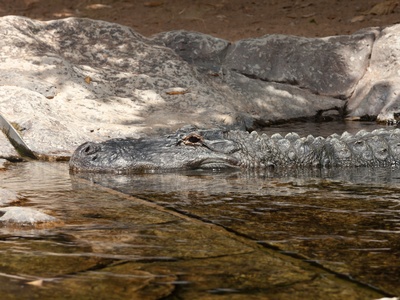
American Alligator
An apex predator of American wetlands, this large crocodilian has a broad snout and dark coloration. It eats fish, birds, and mammals. Its populations have recovered significantly and are now of Least Concern.
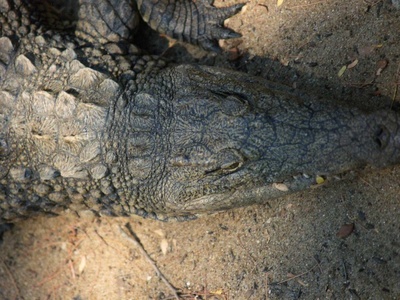
Nile Crocodile
One of Africa’s most formidable predators, the Nile Crocodile is responsible for more human fatalities than any other crocodilian. It has a powerful bite and thrives in a wide range of freshwater habitats.
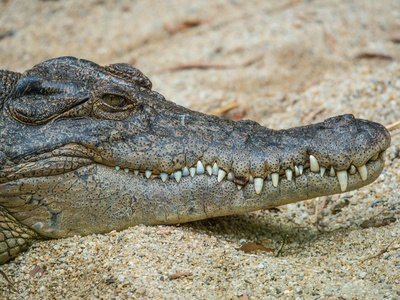
Saltwater Crocodile
This massive crocodilian is an incredibly powerful apex predator, capable of taking down prey as large as water buffalo. It is highly adaptable and can travel long distances at sea, colonizing new river systems.
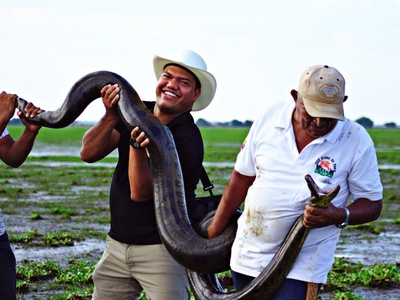
Green Anaconda
A massive, non-venomous constrictor, the Green Anaconda spends most of its life in or near water. It ambushes prey like capybaras, deer, and caimans from the water’s edge. Its conservation status is stable.
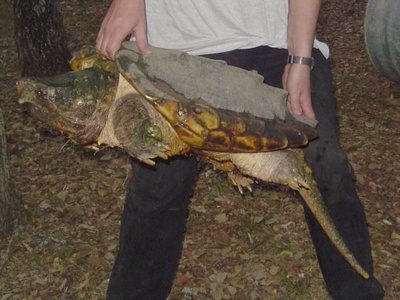
Alligator Snapping Turtle
With a rugged, prehistoric appearance and a powerful bite, this is one of the world’s heaviest freshwater turtles. It is a patient ambush predator, and its populations are considered Vulnerable due to overharvesting.
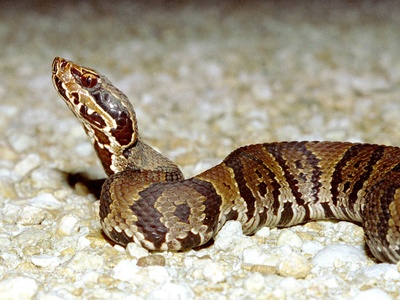
Cottonmouth
Also called a water moccasin, this is a venomous pit viper perfectly adapted to wetland life. It has a heavy body and eats fish, frogs, and small mammals. It will often stand its ground defensively when threatened.
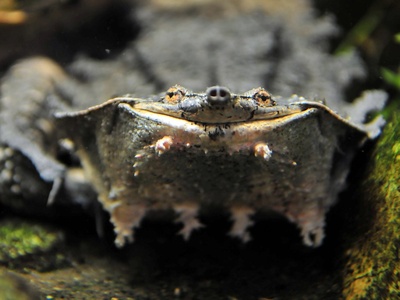
Mata Mata
This sedentary turtle’s shell resembles a piece of bark and its head looks like fallen leaves. This incredible camouflage allows it to ambush prey. It is a unique and fascinating species of Least Concern.
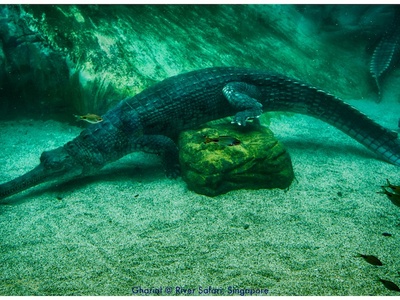
Gharial
A critically endangered crocodilian, the Gharial is uniquely adapted to a fish-based diet. The bulbous growth on the tip of an adult male’s snout, called a ghara, is used for vocalization and display.
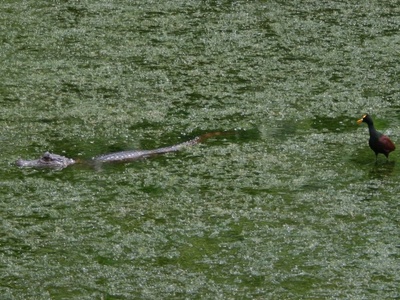
Spectacled Caiman
This is a small to medium-sized crocodilian and one of the most common in the Neotropics. It is highly adaptable, eats a wide variety of prey, and its populations are generally stable.
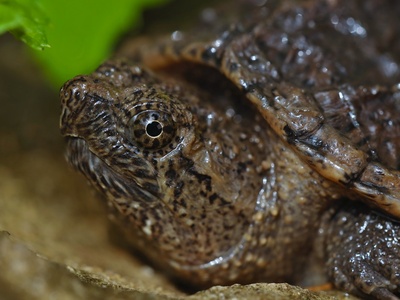
Common Snapping Turtle
A large and robust turtle with a long tail and saw-toothed keel on its shell. It is an opportunistic omnivore, eating plants, carrion, and almost any animal it can catch.
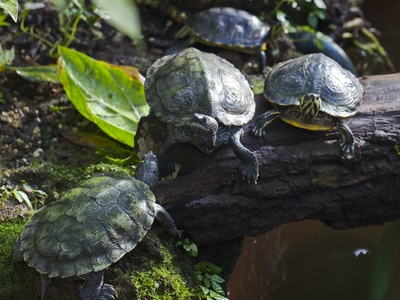
Red-eared Slider
Recognizable by the distinct red stripe behind its eye, this turtle is often seen basking on logs. As an invasive, it outcompetes native turtle species for food and basking spots in many parts of the world.
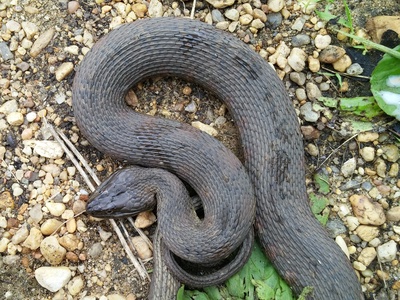
Northern Water Snake
This is a very common and highly adaptable semi-aquatic snake. It is an active hunter of fish and amphibians. When threatened, it will flatten its head and bite repeatedly, but its bite is harmless.
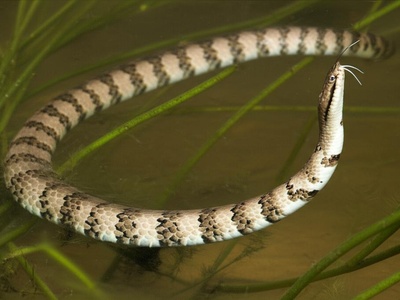
Tentacled Snake
This fully aquatic snake is a fascinating ambush predator. It anchors its tail to a plant and waits for fish, using its unique tentacles and a C-shaped body posture to startle prey directly into its mouth.
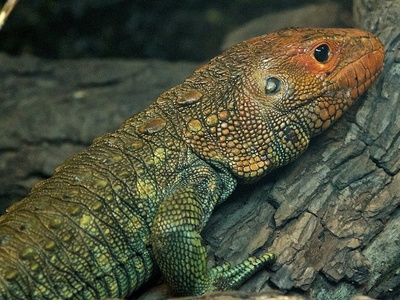
Caiman Lizard
This large, semi-aquatic lizard looks like a small caiman with its green body and armored scales. It is a highly specialized predator, feeding almost exclusively on aquatic snails. Its population is stable.
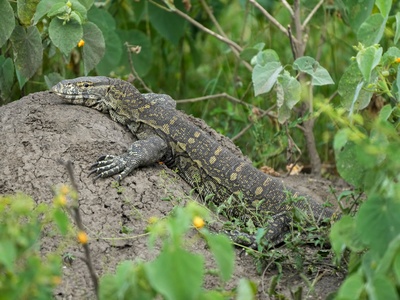
Nile Monitor
This large, intelligent lizard is a dominant predator in African wetlands. It has a varied diet including eggs, crabs, birds, and carrion. It is known for raiding crocodile nests for their eggs.
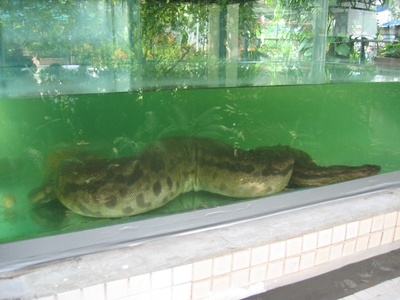
Elephant Trunk Snake
Also known as the Javan file snake, this is a non-venomous, fully aquatic snake that is a nocturnal ambush predator of fish. Its loose skin helps it grip slippery prey underwater.
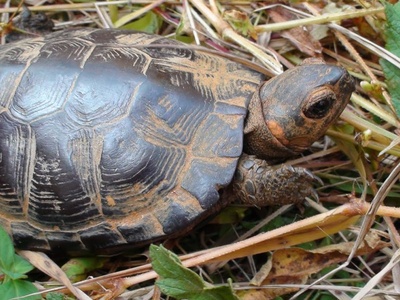
Bog Turtle
This tiny, secretive turtle is easily identified by the bright orange or yellow blotch on each side of its neck. It requires specialized, open-canopy wetlands and is a major focus of conservation efforts.
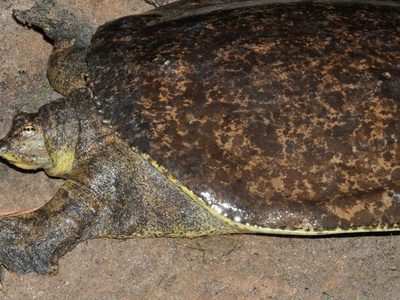
Spiny Softshell Turtle
This turtle is a fast swimmer and active predator of crayfish, insects, and fish. It often buries itself in the substrate with only its head exposed, breathing through its long proboscis.
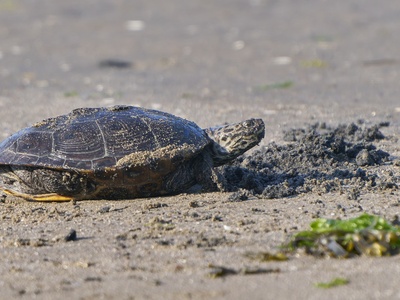
Diamondback Terrapin
This beautiful turtle has a uniquely patterned shell and skin. It feeds on marsh snails, clams, and crabs. Populations are threatened by habitat destruction and drowning in crab pots.
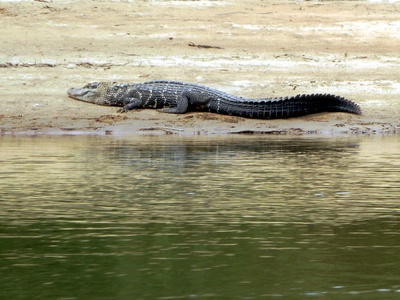
Black Caiman
This formidable crocodilian was once hunted to near extinction for its hide but is now making a comeback. As an apex predator, it plays a crucial role in maintaining the health of its ecosystem.
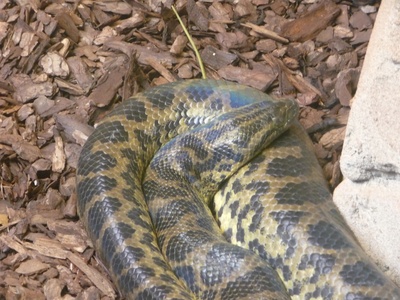
Yellow Anaconda
This large constrictor is well-suited to the open marshes of the Pantanal. It preys on birds, fish, and small mammals. Its distinct yellow and black pattern provides excellent camouflage in the vegetation.
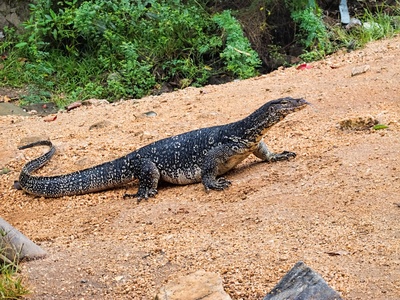
Asian Water Monitor
This large, semi-aquatic lizard is an opportunistic carnivore, eating anything from crabs to carrion. It is a powerful swimmer and is commonly found in a wide range of wetland and even urban environments.
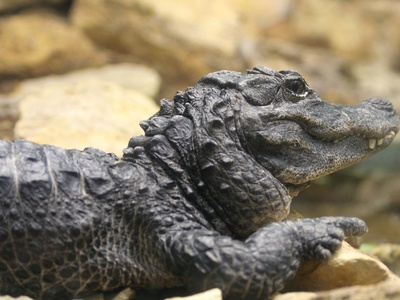
Chinese Alligator
This small, secretive alligator is much less imposing than its American cousin. Wild populations are critically low due to habitat loss and human conflict, with most individuals now living in captivity.
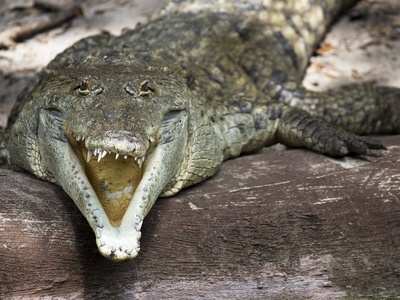
Orinoco Crocodile
This large crocodile, characterized by its long, slender snout, was hunted to the brink of extinction. Conservation efforts are underway to save this important apex predator from disappearing forever.
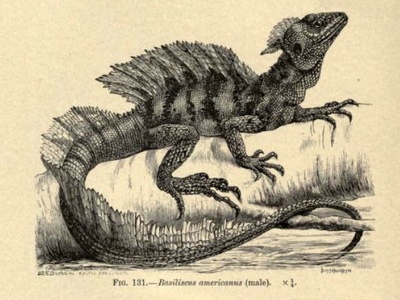
Common Basilisk
This lizard has specialized scales on its feet that create air pockets, allowing it to sprint across water surfaces to escape predators. It is an omnivore, feeding on insects, flowers, and small vertebrates.
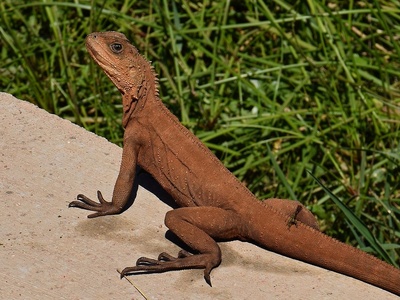
Australian Water Dragon
A common and conspicuous semi-aquatic lizard often seen basking on rocks and branches overhanging water. When threatened, it will readily dive into the water and can stay submerged for long periods.
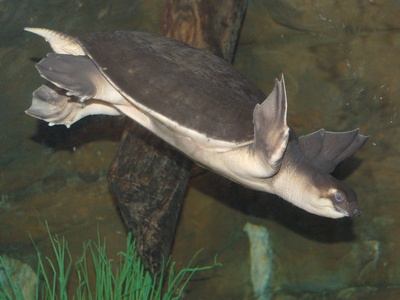
Pig-nosed Turtle
This unique turtle, the sole survivor of its family, has a distinctive pig-like snout used as a snorkel. It is an omnivore and its populations are vulnerable due to illegal trade and egg harvesting.
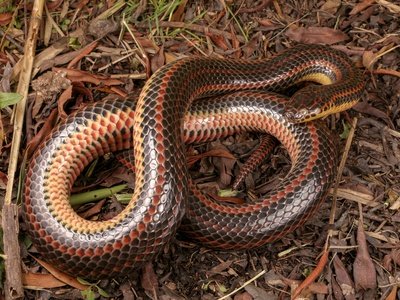
Rainbow Snake
This iridescent, non-venomous snake is rarely seen due to its aquatic and burrowing habits. Its glossy scales shimmer with a rainbow-like sheen, making it one of North America’s most striking snakes.
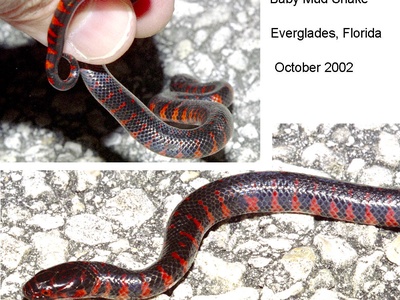
Mud Snake
This large, glossy black snake with a red or pink belly is a specialized predator of large aquatic salamanders like sirens and amphiumas. It is highly aquatic and a powerful burrower in mud.
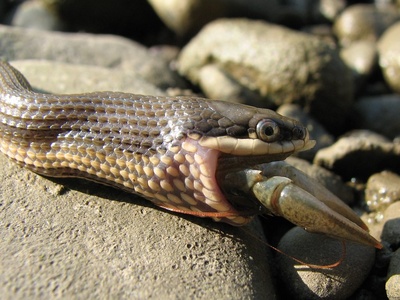
Queen Snake
This slender, non-venomous snake is highly dependent on clean streams with healthy crayfish populations. Its presence is often an indicator of good water quality. Its population is declining in some areas.
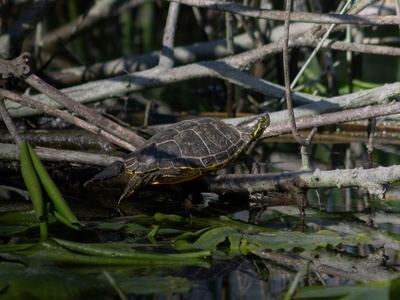
Florida Softshell Turtle
This turtle is a powerful swimmer and voracious predator, consuming snails, fish, and insects. It has a long neck and a strong jaw, and it will not hesitate to bite defensively if handled.
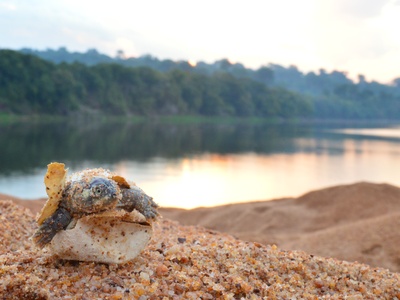
Giant South American River Turtle
Also known as the Arrau turtle, this is one of the largest freshwater turtles in the world. It is primarily herbivorous, feeding on fallen fruits and vegetation. It is vulnerable due to historical overharvesting of eggs.
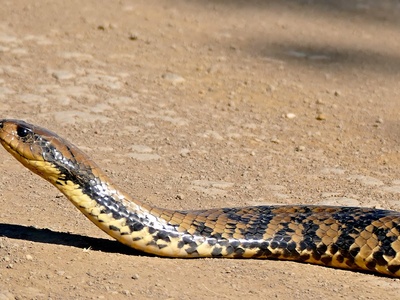
Water Cobra
This true cobra is a skilled swimmer and spends much of its time hunting fish. Unlike its terrestrial relatives, it has a more slender body and is one of the largest true cobras. It is secretive and rarely encountered.
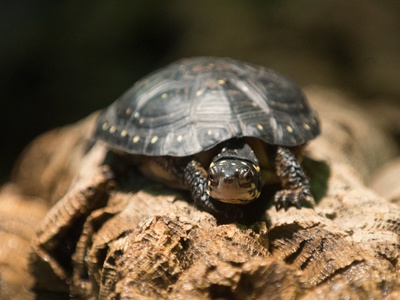
Spotted Turtle
This attractive turtle is semi-aquatic, often moving between several small wetlands throughout the year. Its populations are threatened by habitat loss and illegal collection for the pet trade.
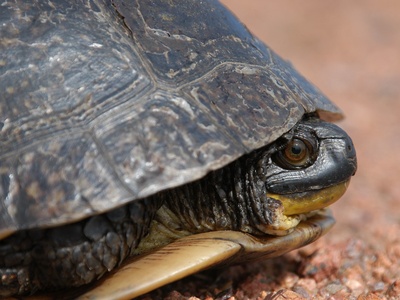
Blanding’s Turtle
This semi-aquatic turtle is known for its gentle nature and long life, potentially exceeding 80 years. It is an endangered or threatened species in many parts of its range due to habitat fragmentation.
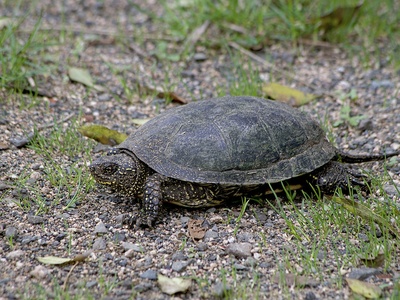
European Pond Turtle
This adaptable turtle is an omnivore with a dark, often yellow-flecked shell. Its populations have declined due to habitat destruction, pollution, and competition from invasive Red-eared Sliders.
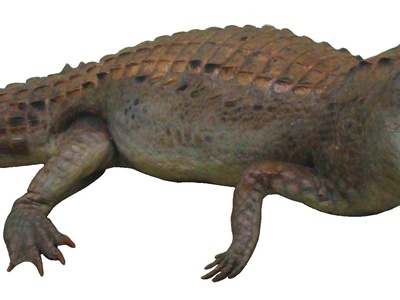
Tomistoma
Despite its snout, this large crocodilian has a more varied diet than the true Gharial, eating fish, monkeys, and birds. It is a vulnerable species, threatened by deforestation and dam construction.
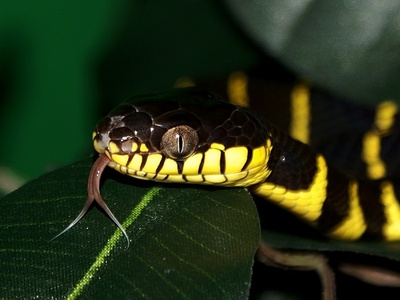
Mangrove Snake
This rear-fanged snake is primarily arboreal but is strongly associated with wetland habitats. It is nocturnal and preys on birds, eggs, lizards, and small mammals found within the mangrove ecosystem.
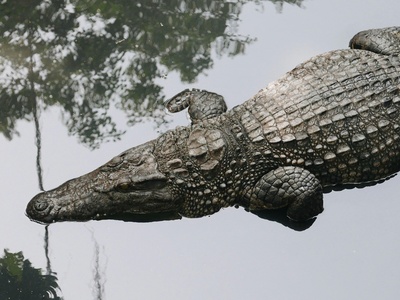
Cuban Crocodile
This critically endangered crocodile has longer, stronger legs than its relatives, allowing it to move effectively on land. It is known to exhibit a unique galloping gait when pursuing prey.
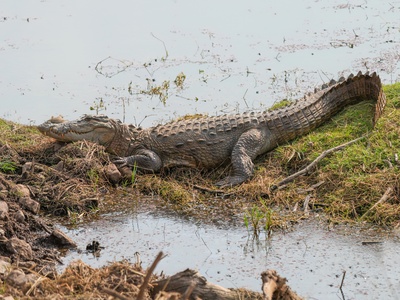
Mugger Crocodile
Also known as the Marsh Crocodile, this species is a skilled predator of fish, reptiles, and mammals. It is considered vulnerable, facing threats from habitat loss and human-wildlife conflict.
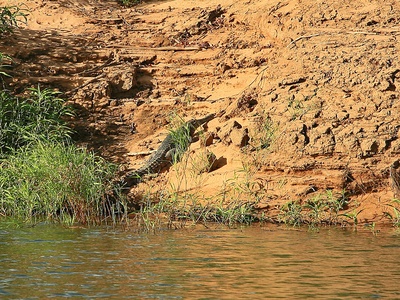
Freshwater Crocodile
Locally known as “Freshies,” these crocodiles primarily eat fish and are not considered a major threat to humans. They coexist with the much larger and more dangerous Saltwater Crocodile in some areas.
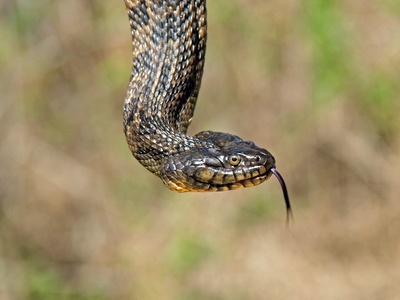
Diamondback Water Snake
This is one of the largest species of water snake in North America. It is a heavy-bodied, non-venomous snake that actively forages for fish and frogs in a variety of aquatic habitats.
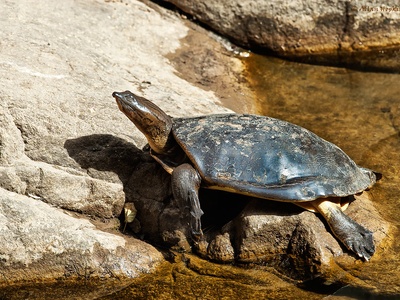
Indian Flapshell Turtle
This species is similar to a softshell turtle but belongs to a different family. It is highly adaptable and can tolerate polluted water, even aestivating in mud during dry periods to survive.
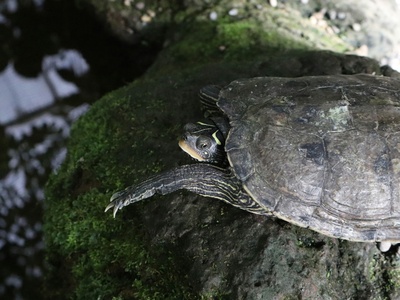
Central American River Turtle
Also known as the Hickatee, this fully aquatic, nocturnal turtle is critically endangered due to overhunting for its meat. It is a herbivore, feeding on aquatic plants and fallen leaves.
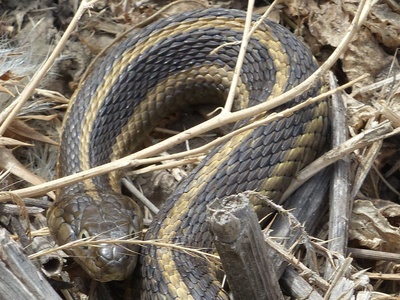
Giant Garter Snake
This endangered snake is a powerful swimmer and depends on wetlands with dense vegetation for cover. It preys on fish and amphibians and is threatened by the extensive loss of its natural marshland habitat.
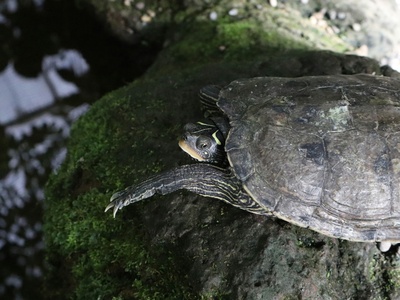
Eastern Long-necked Turtle
This turtle has an exceptionally long neck, almost the length of its shell, which it uses like a snorkel and to strike at prey. It is a carnivore, feeding on insects, tadpoles, and fish.
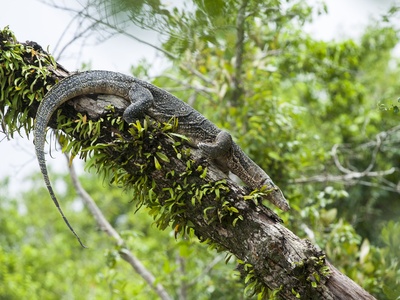
Mangrove Monitor
This monitor lizard is perfectly adapted to coastal and island life. It is an opportunistic predator with a varied diet that includes crabs, birds, eggs, and carrion. It plays a key role in the mangrove ecosystem.
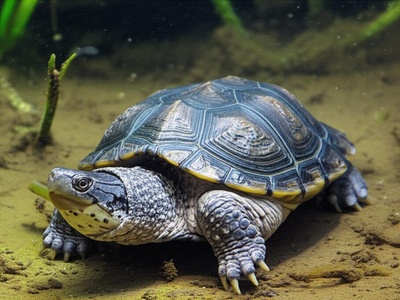
Okavango Hinged Terrapin
This turtle is a bottom-dweller and an omnivore, feeding on aquatic plants and invertebrates. Its dark shell provides camouflage against the peat-stained waters of its unique swamp habitat.
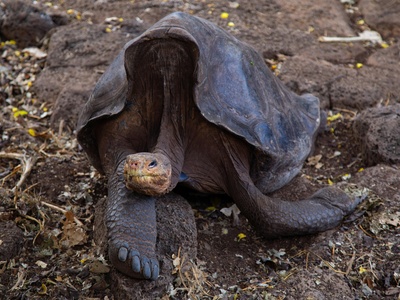
African Helmeted Turtle
This common side-necked turtle is a tough survivor. It is an aggressive predator and scavenger, eating almost anything it can find. It gets its name from its large head shield, or “helmet.”
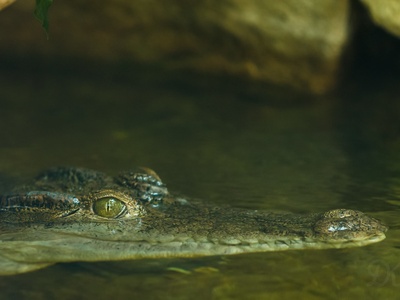
Philippine Crocodile
This relatively small crocodile, also known as the Mindoro Crocodile, is endemic to the Philippines. Conservation programs, including captive breeding, are crucial for its survival against habitat loss and persecution.
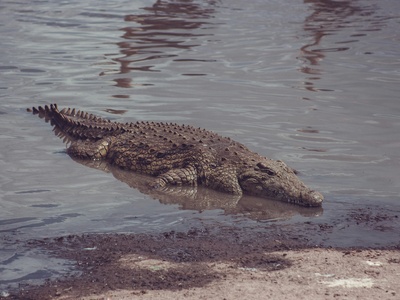
Siamese Crocodile
This medium-sized freshwater crocodile has a relatively broad snout. The vast majority of the remaining population lives in Cambodia, with tiny remnants elsewhere. Hybridization with Saltwater Crocodiles is a threat.
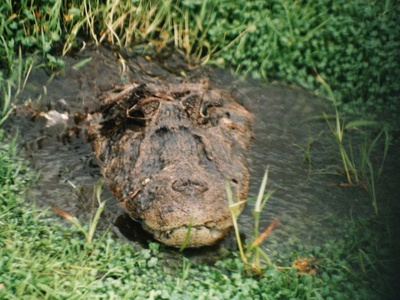
Broad-snouted Caiman
This caiman prefers heavily vegetated, quiet waters. It is better adapted to cooler climates than other caiman species. Its population is recovering from past overhunting but is still threatened by habitat loss.
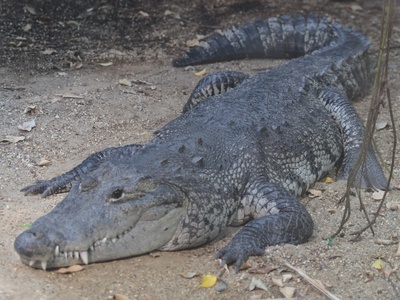
Morelet’s Crocodile
This medium-sized crocodile has a broad snout and dark coloration. It was once heavily hunted for its hide but has made a significant recovery thanks to conservation measures and is now of Least Concern.
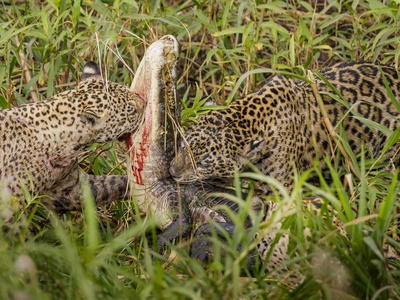
Yacare Caiman
Closely related to the Spectacled Caiman, this species is a keystone predator in the Pantanal, the world’s largest tropical wetland. Its populations have recovered since a ban on commercial hunting.
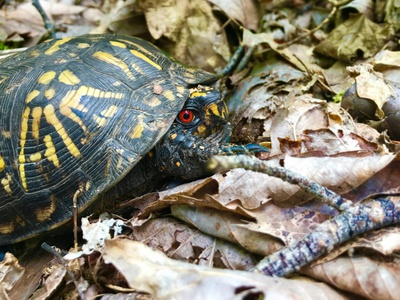
Wood Turtle
This semi-aquatic turtle has a beautifully sculpted, rough carapace and orange coloration on its neck and limbs. It forages for slugs, worms, and berries in forests but relies on rivers for hibernation and mating.
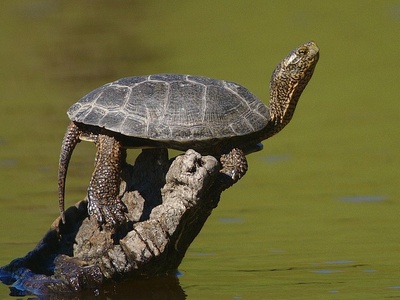
Western Pond Turtle
This turtle has a drab, unpatterned shell, providing camouflage in its varied habitats. Populations are declining due to habitat destruction, disease, and predation by invasive bullfrogs.
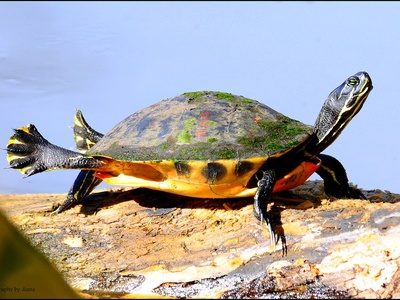
Florida Red-bellied Cooter
This large basking turtle is primarily herbivorous, feeding on aquatic vegetation. It is a common sight in Florida’s freshwater ecosystems and plays a role in controlling aquatic plant growth.
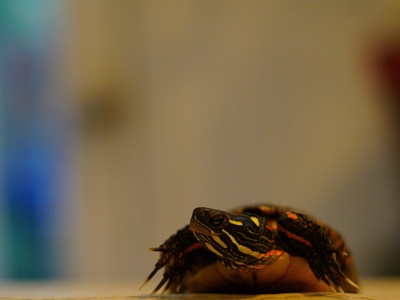
River Cooter
This large basking turtle has intricate, light-colored patterns on its dark carapace. It is primarily herbivorous as an adult, grazing on aquatic plants. It is a widespread and common species.
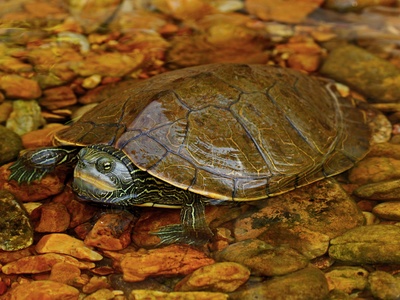
Northern Map Turtle
This turtle is a dietary specialist, with females having large heads and powerful jaws for crushing mollusks, while males eat insects. It is a wary basker, quickly diving into water when approached.
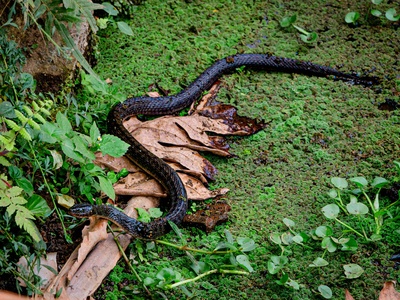
Black Swamp Snake
This secretive, glossy black snake has a bright red belly. It is an excellent swimmer and forages for small prey like leeches, worms, and tadpoles amidst dense aquatic vegetation. It rarely leaves the water.

Glossy Marsh Snake
This slender, semi-aquatic snake has a diet consisting almost entirely of crayfish. It is secretive and often hides in crayfish burrows or dense vegetation at the water’s edge.
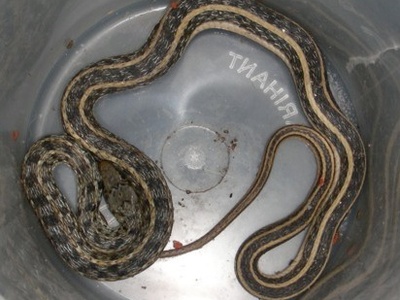
Striped Keelback
This non-venomous snake has distinct stripes running down its body. It is a diurnal hunter, actively foraging for frogs, toads, and fish in shallow water.
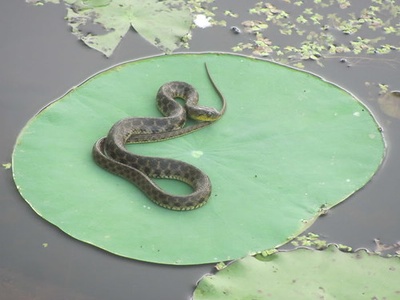
Checkered Keelback
This non-venomous water snake is an opportunistic feeder, consuming fish, frogs, and rodents. It is highly adaptable and can be aggressive if cornered, flattening its neck to mimic a cobra.
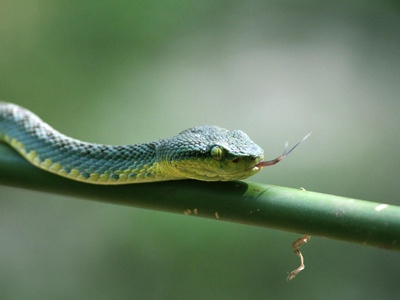
Arafura File Snake
This is the largest of the three file snake species. It is a fully aquatic, non-venomous ambush predator of large fish. Its extremely loose, rough skin gives it an exceptional grip on slippery prey.
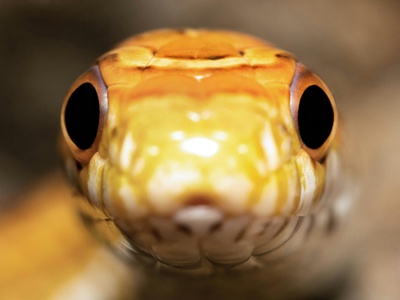
Puff-faced Water Snake
This mildly venomous, rear-fanged snake is a nocturnal predator of fish and frogs. It is common in disturbed habitats like rice paddies and is often encountered by farmers.
